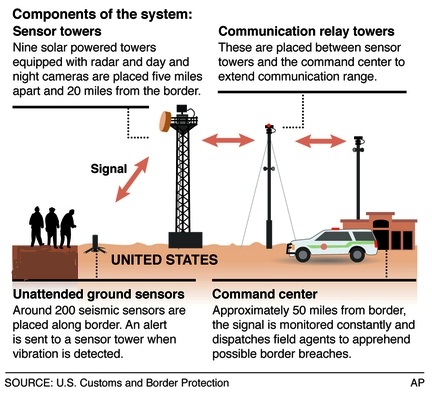NY plans 24M$ for new Security Programs
The network, patterned after one under development in Lower Manhattan, would eventually use public and private security cameras and license plate readers and would be able to record and track every vehicle moving between 34th and 59th Streets, river to river. But because neither the S.U.V. used in the attempt nor the license plate on it had been reported stolen, it would not have raised any immediate red flags.
Eventually, police officials have said, the networks would be able to notice whether a car was circling any area suspiciously. Because the security network is not yet in place in Midtown, it was not known whether the S.U.V. was driven directly to its target on Saturday night.
The network could have been triggered via its chemical, biological and radiological sensors, presuming that the material in the vehicle, which is not yet fully analyzed, was detectable.
The department secured a $24 million Department of Homeland Security grant last fall to begin building the network. Commissioner Raymond W. Kelly said he was seeking more federal money to complete it. Paul J. Browne, a spokesman for the department, said that license plate readers are already being used.
“There really isn’t a downside to it,” said Louis Anemone, a former official for the New York Police Department and former head of security for the Metropolitan Transportation Authority. “Next time it may not get this far because of the technology.”
Even if it could not help prevent an attack, he said, “it helps to clearly identify the people involved and get good photos so officers can follow up.”
Mr. Kelly, calling the network “a whole new area for us,” said Sunday, “It has a lot of promise; in that regard we are very enthusiastic about it.”
The New York Civil Liberties Union has raised privacy concerns about the networks, and has sued the Police Department and Department of Homeland Security for information about the networks and how long the surveillance images and data would be retained in their databases.
The plan was already activated in March this year after Moscow bombing.
Though the Moscow bombings appear related to the conflict in the North Caucasus and New York’s greatest threat is seen as coming from al Qaeda, police enacted the same security detail that they roll out after any attack elsewhere in the world.
This time it closely follows one man’s admission he was plotting a suicide bombing of New York subways with al Qaeda training.
“We don’t have any information suggesting that it’s related (to al Qaeda) but as a precaution we are increasing coverage,” police spokesman and Deputy Commissioner Paul Browne said.
The city’s fleet of “critical response vehicles” that guard sensitive locations were sent to mass transit hubs such as Grand Central Terminal and Penn Station, Browne said.
Officers patrolling the subways overnight were kept on duty as the morning shift reported, practically doubling the number of officers.
The city may also send a detective to Moscow, as it often does following similar attacks around the world, Browne said.
The New York Police Department has detectives in 11 foreign cities working to prevent foreign extremists from hitting New York, which has been attacked twice — on September 11, 2001, and in a 1993 truck bombing of the World Trade Center.
The New York subway system security came under intense scrutiny after the transit attacks on Madrid in 2004 and London in 2005.
On February 22, Afghan immigrant Najibullah Zazi pleaded guilty to plotting a suicide bomb attack on New York City subways with al Qaeda training for what would have been the worst attack on the United States since 2001.
“Whether they are related or not our standard operating procedure is to take precautions until more is known,” Browne said.
by Daniel Trotta & Michael Schmidt

